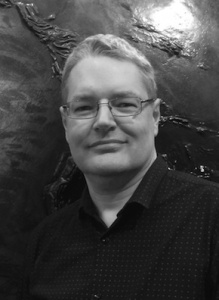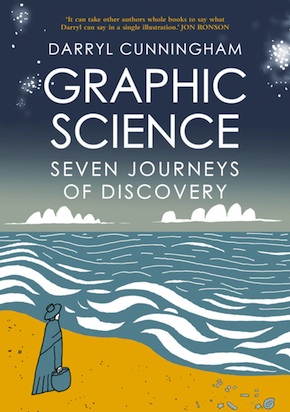Graphic science
by Darryl CunninghamMuch is known about scientists such as Darwin, Newton, and Einstein, but what about lesser-known heroes who have not achieved a high level of fame, but who have contributed greatly to human knowledge? What were their lives like? What were their struggles, aims, successes and failures? How do their discoveries fit into the bigger picture of science as a whole?
Overlooked, sidelined, excluded, discredited: key figures in scientific discovery take their bow in this alternative Nobel Prize gallery.
Antoine Lavoisier: the father of French chemistry who gave oxygen its name was a wealthy man who found himself on the wrong side of a revolution and paid the price with his life.
Mary Anning: a poor, working-class woman who made her living fossil-hunting along the beach cliffs of southern England, Anning found herself excluded from the scientific community because of her gender and social class. Wealthy male experts took credit for her discoveries.
George Washington Carver: born a slave, Carver become one of the most prominent botanists of his time, as well as a teacher at the Tuskegee Institute. Carver devised over 100 products including dyes, plastics and gasoline using one major ingredient – the peanut.
Alfred Wegener: a German meteorologist, balloonist, and arctic explorer, his theory of continental drift was derided by other scientists and only accepted into mainstream thinking after his death. He died in Greenland on an expedition, his body lost in the ice and snow.
Nikola Tesla: a Serbian-American inventor, electrical engineer, mechanical engineer, physicist and futurist best known for his contributions to the design of the modern alternating current (AC) electricity supply system. A competitor of Edison, Tesla died in poverty despite his intellectual brilliance.
Jocelyn Bell Burnell: a Northern Irish astrophysicist. As a postgraduate student, she discovered the first radio pulsars (supernova remnants) together with her thesis supervisor Antony Hewish, who later shared the Nobel Prize in physics while Bell Burnell was excluded.
Fred Hoyle: an English astronomer noted primarily for the theory of stellar nucleosynthesis – the process whereby most of the elements in the periodic table are created. He was also noted for the controversial positions he held on a wide range of scientific issues, often in direct opposition to prevailing theories. This eccentric approach contributed to him to being overlooked by the Nobel Prize committee.
Read an extract from Mary Anning’s story:
 Darryl Cunningham studied at Leeds College of Art and lives in Yorkshire. He is now a full-time cartoonist, but he has also worked as a healthcare assistant on an acute psychiatric ward, which informed and inspired his acclaimed first book of factually-based comics, Psychiatric Tales (Blank Slate, 2010). His second book Science Tales was published by Myriad Editions in 2012, followed by Supercrash: How to Hijack the Global Economy (2014). His work is published in The Art of Saving a Life, a global resource by renowned artists to encourage vaccination, sponsored by the Bill & Melinda Gates Foundation. Graphic Science is out now from Myriad, priced £16.99.
Darryl Cunningham studied at Leeds College of Art and lives in Yorkshire. He is now a full-time cartoonist, but he has also worked as a healthcare assistant on an acute psychiatric ward, which informed and inspired his acclaimed first book of factually-based comics, Psychiatric Tales (Blank Slate, 2010). His second book Science Tales was published by Myriad Editions in 2012, followed by Supercrash: How to Hijack the Global Economy (2014). His work is published in The Art of Saving a Life, a global resource by renowned artists to encourage vaccination, sponsored by the Bill & Melinda Gates Foundation. Graphic Science is out now from Myriad, priced £16.99.
Read more
darryl-cunningham.blogspot.co.uk
@AcmeDarryl
“Graphic Science is a rich, rewarding, fascinating and warmly personable view into some of those who, often against the odds, have added fuel to the shining beacon of learning and knowledge which has helped defined our species, our place in the world, our understanding of that world and the vast cosmos around us. A wonderful read.” Joe Gordon, Forbidden Planet


